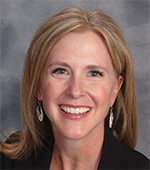Today’s transportation industry workforce faces a myriad of challenges. Infrastructure is aging and funding to maintain and replace it is insufficient. Our transportation network is evolving before our eyes – from autonomous vehicles to incorporating resilience and sustainability measures as we design, build, and maintain our roads in the face of climate change. Our rapidly changing world means we could be tasked with designing and planning to accommodate technologies that have not yet even been created. While these challenges are significant, the next generation of transportation leaders and practitioners are faced with exciting opportunities if they stay nimble and think outside the box.
According to the American Society of Civil Engineers (ASCE) 2017 Infrastructure Report Card, the average age of a bridge in the U.S. is 43 years, the average age of a dam is 56 years old, and some drinking water pipes are well over 100 years old. Our aging infrastructure is forcing some incredible innovations as today’s workforce learns how to optimize technology. Technological advancements have allowed us to more efficiently inspect and monitor our aging infrastructure. Drones can be used to remotely inspect railroad tracks and powerlines. Magnetic sensors can be deployed to detect the size and location of water main leaks. The collection of real-time data is allowing us to make smarter decisions by optimizing our existing networks and making repairs to ward off costlier failures before they occur.
A workforce that embraces asset management can also help us combat our funding challenges. Continuously inventorying and evaluating infrastructure assets can provide owners and policymakers with the data needed to make prudent decisions on how to fund, when to repair, and when to replace assets in the most cost-efficient manner possible. While some, particularly in the private sector, have used asset management planning for years, others at the state and local levels are increasingly prioritizing this approach to optimize infrastructure projects. However, asset management is only truly effective if it is put to use and embraced organization-wide. More training is needed on how to collect and analyze information and how to use data to make final decisions.
As we embrace new technologies and techniques to address today’s problems, it’s also critical that we think holistically about solutions to fit our future world. To lean into that challenge, ASCE completed the first phase of an initiative called Future World Vision, with the release of a white paper that looks at key trends shaping the built environment including alternative energy, climate change, and autonomous vehicles. Regardless of what the future holds, what is clear is that engineers – and the industry as a whole – need to learn to be systems integrators as opposed to highly siloed disciplines of the 20th century. This will better enable us to build and maintain systems that will last us for 50, 100 years, or more.
Finally, whether it’s maintaining today’s assets or planning for the world of tomorrow, we need an educated, diverse workforce that embraces innovation. Trade school graduates provide important skills for the industry. We must continue to push for and support the trades and show that working in the transportation industry can be done with trade experience or with a college degree.
In order to attract the best to the field, we must ensure that the industry adapts to the changing pace of the world, is impactful, authentic, and exciting. We need to push the boundaries of what is possible in this changing industry, teach the importance of constantly learning and being forward-thinking as we think about and prepare for the challenges of tomorrow.

Kristina L. Swallow is a dedicated professional with nearly 25 years of diverse experience in engineering, public policy, and community advocacy and voluntarism. She is passionate about having a positive impact on the places she lives, organizations she serves, and the people she works with. Her roles have included being a small business owner, working as a consultant, serving as a program manager in city government, working as a lobbyist in the Nevada State Legislature, and working as a legislative aide in the U.S. Senate where she was able to negotiate language in the final passage of MAP-21.




